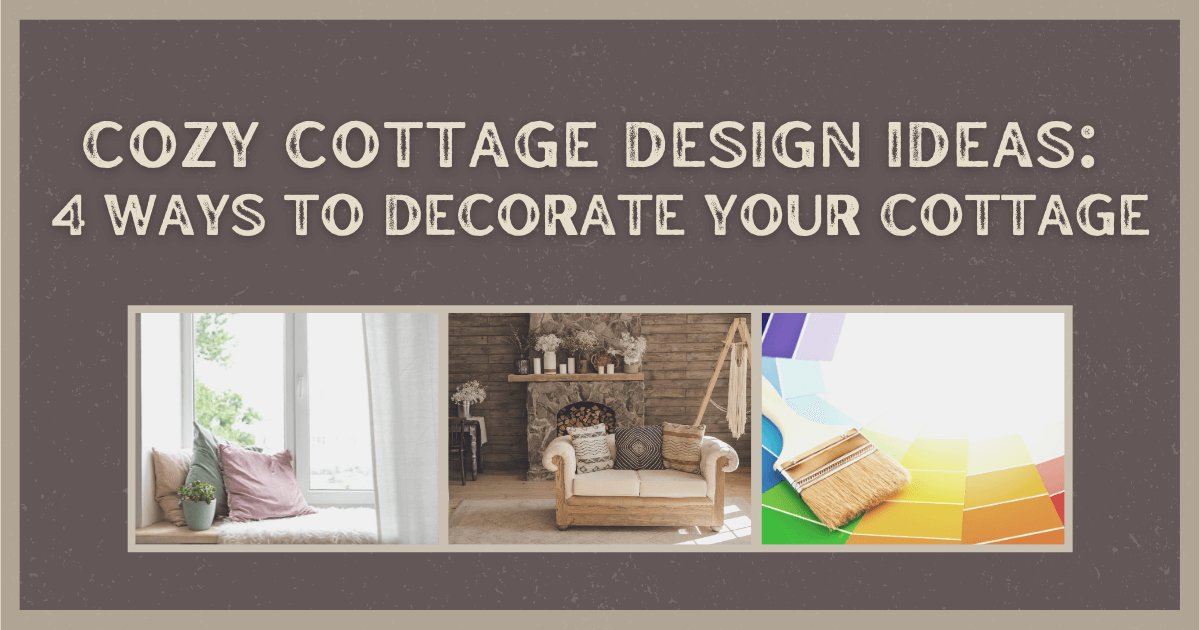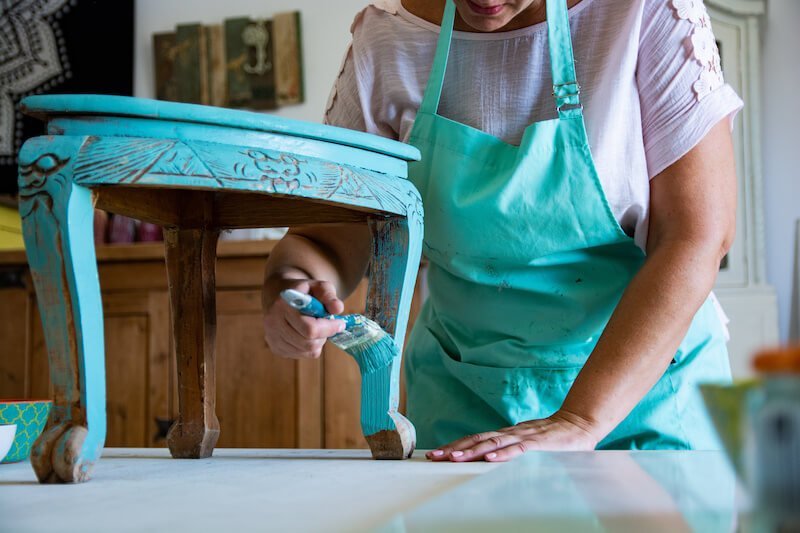
The cottage lifestyle is often a dream come true for those seeking a rustic-style home that is quaint, cozy, and reminiscent of past eras.
These unique and charming abodes come in various architectural styles, and many employ a variety of designs to create truly unique cottage-style homes both inside and out.
Due to the unique characteristics of cottages, there are truly no hard and fast rules when it comes to interior decorating. Those who feel inspired to embrace their quirkiness or sense of personal taste have more freedom when choosing pieces for a cottage. Still, there are some tendencies that some homeowners follow — read on to learn about some of the most endearing cottage decor and style trends.
Table of Contents
Showcase the Unique Architecture
The architectural features of cottages make them some of the most unique amid home styles today. Graced with designs that include steeply sloped ceilings, cozy nooks and second-story dormer rooms or attics, there are a number of ways to showcase these charming spaces.
Nooks are private places generally confined to a small corner or a recess and are a niche or hollow place within the cottage. Design illusions are a decorator's best friend in making these areas look and feel larger while maintaining a sense of solitude and respite due to their low ceilings. Many use these areas to create a seating area for reading or gazing at the outdoor gardens, and some transition them into quiet writers' retreats.
Attics typically have low, sloped ceilings that set the ultimate tone for intimate, private escapes. These can be utilized for several uses with the right transitional plan. An extra bedroom could come in handy, and an attic with a window is a great place to create one. Larger attics can even be transformed into a small studio apartment that might be a place for overnight guests or as a rentable unit for travelers to supplement income.
Choose Natural Materials and Rustic Inspirations
Cottage style aspires to create a warm, inviting and homely feel, and the use of rustic furnishings and natural materials is a traditional way of achieving this design goal. Walls of white or warm shades based on natural tones enhance the mood of almost any space in a cottage.
Honeyed yellow shades, creams, and earthy stone gray and beige hues prevent smaller areas from feeling closed in and cramped. Lighter colors such as pinks can truly complement any terra cotta or brick installation by creating a contrast that isn't overwhelming. These shades are also dominant in furnishings and materials throughout a traditional cottage.
Natural wood furniture is a brilliant way to connect the indoor space in a cottage to its surroundings while adding character. Antique furniture blends nicely with new pieces, and the colors of wood don't even have to match as long as the pieces are coherent and authentic to the same era. Mission and Shaker-style furnishings are simplistic and are perfect for a cottage — they even mix and match quite nicely and are affordable pieces that can be employed throughout the home.
Outdoor gardens often dominate the landscaping outdoors versus a sprawling lawn. Neighborhoods with cottage-style homes can have quite the collection of nature, as cottages are known for having draping plants, hedgerow flowers, herb baskets, and plenty of plants throughout massive gardens that attract birds, butterflies and other wildlife.
Vintage and Eclectic are Two Great Guidelines
 Vintage and eclectic furniture and accessories are trendy choices for owners decorating their cottages. It's not uncommon for furnishings and decorations to be recycled or vintage. These pieces need not match, as the varied looks can establish a greater sense of charm and comfort overall. Look for pieces at yard sales, resale shops and flea markets, and it's relatively easy to repaint and re-stain reclaimed furnishings to suit a personal style.
Vintage and eclectic furniture and accessories are trendy choices for owners decorating their cottages. It's not uncommon for furnishings and decorations to be recycled or vintage. These pieces need not match, as the varied looks can establish a greater sense of charm and comfort overall. Look for pieces at yard sales, resale shops and flea markets, and it's relatively easy to repaint and re-stain reclaimed furnishings to suit a personal style.
In cottage decor, it's not unusual for certain pieces to be transitioned and adapted from one use to another. For example, a kitchen cupboard can become a towel and essentials holder in the bathroom. A kitchen table could easily become a desk, while an old bench might be useful as a long and narrow coffee table or TV stand.
Old sections of iron or wood fencing can be reused as headboards or wall decor. Just stay true to the theme, and the possibilities are limitless. Flooring within cottage-style homes can be informal and may be bare or imperfect. Even new wood can be sanded to look old if that's the look one is going for. Wooden flooring can even be stenciled on with patterns and colors that highlight other decor.
Accessories can be composed of anything new or old, and the more unusual they are, the more they accent cottage-style decor. Think about heirloom samplers, funky vintage hats, musical instruments, or any other useful item that can become a conversation piece and be the center of attention in any room.
Vibrant Colors Can Help Small Spaces
Whether decorating furniture or walls, bright colors can help enhance any small space, allowing accent walls to help a room feel larger. However, it's good to have a unifying theme. Popular trends in cottage hues include a mixture of pinks, greens, and floral prints in English architecture.
Rustic themes work well with rough-hewn or twig wood furniture along with bright greens, rusty hues, and tones of gold. Want an oceanside feel? Consider vibrant blues, greens, and golds along with bright white cloud-like ceilings. Don't hesitate to mix and match vibrantly colored fabrics for slipcovers, pillows, curtains, tablecloths, or customized seat cushions and throw rugs.
There Are No Rules for Cottage Decor
Cottage-style homes leave room for occupants to embrace their imagination and tap into their artistic side. With no defined rules concerning interior adornments and furnishings, buying a cottage can be a liberating experience that owners can enjoy day after day. From connecting outdoor and indoor design to finding a favorite mix of color and decorations, there's no limit to what a cottage homeowner can do.
Nashville Cottage Resources
- Cottage Style Architecture Guide: 3 Most Common Characteristics of Cottage Style Homes
- Cozy Cottage Design Ideas: 4 Ways to Decorate Your Cottage
- Best City Neighborhoods with Cottage Style Homes - Coming Soon!
- Search Nashville Cottage-Style Homes For Sale



